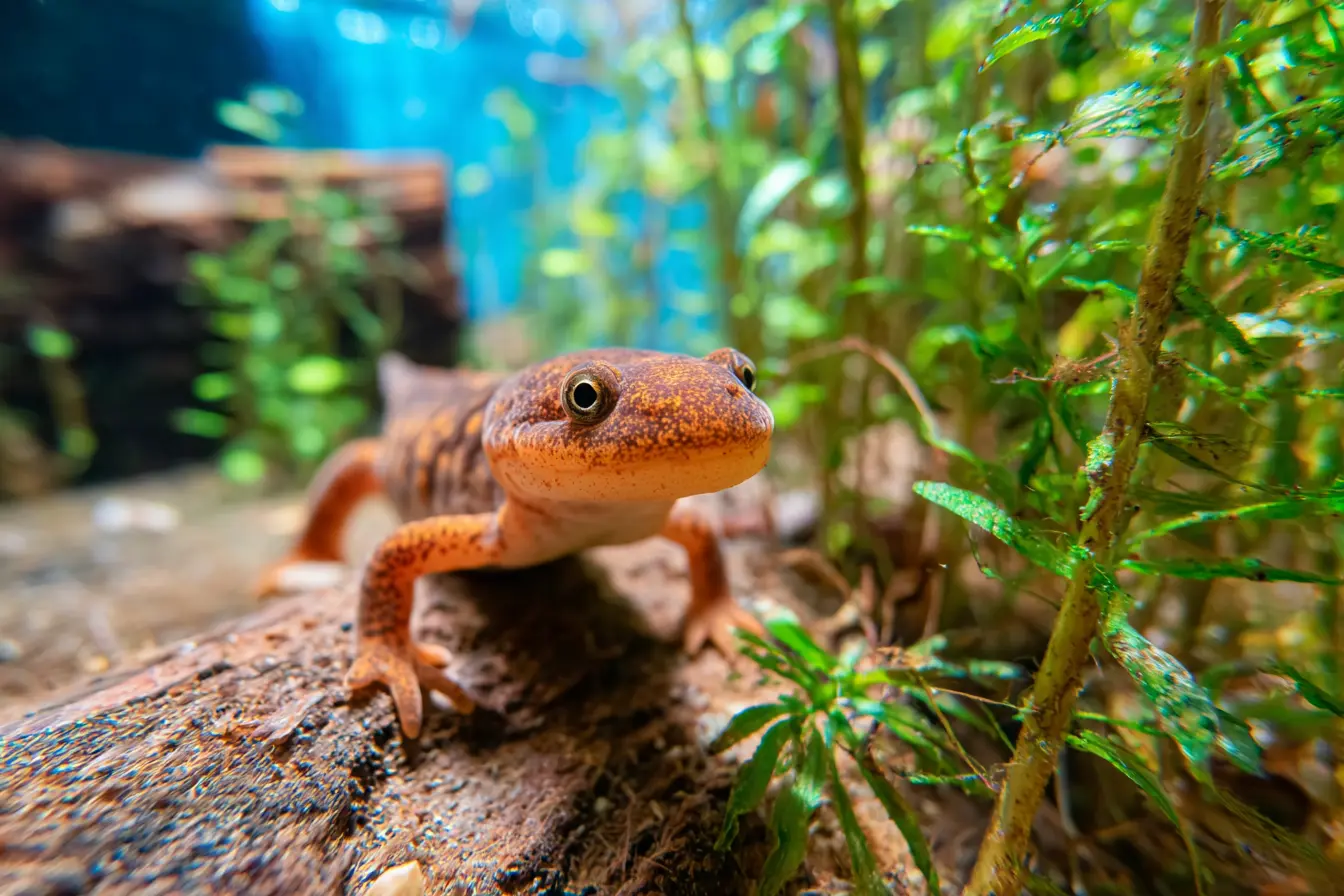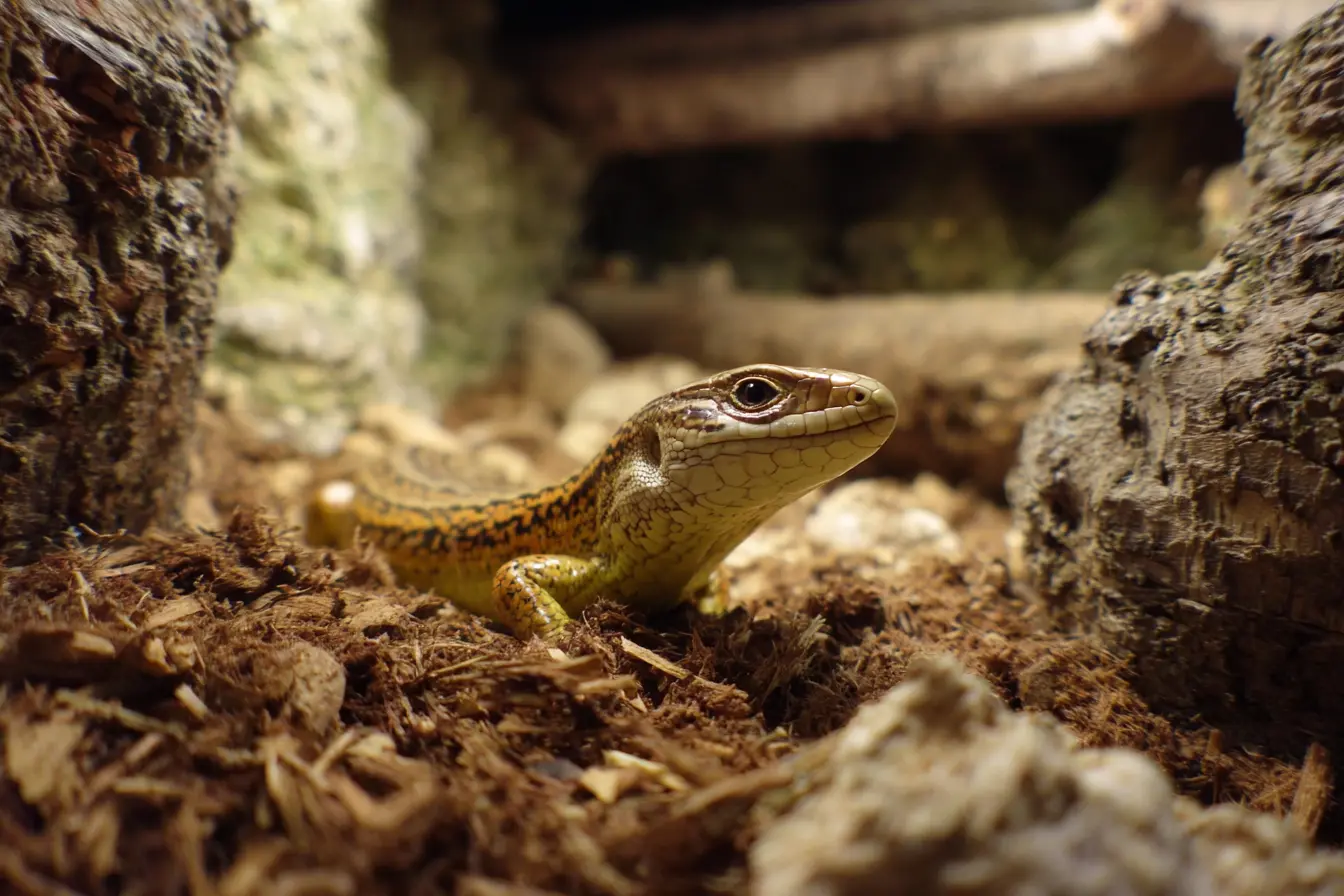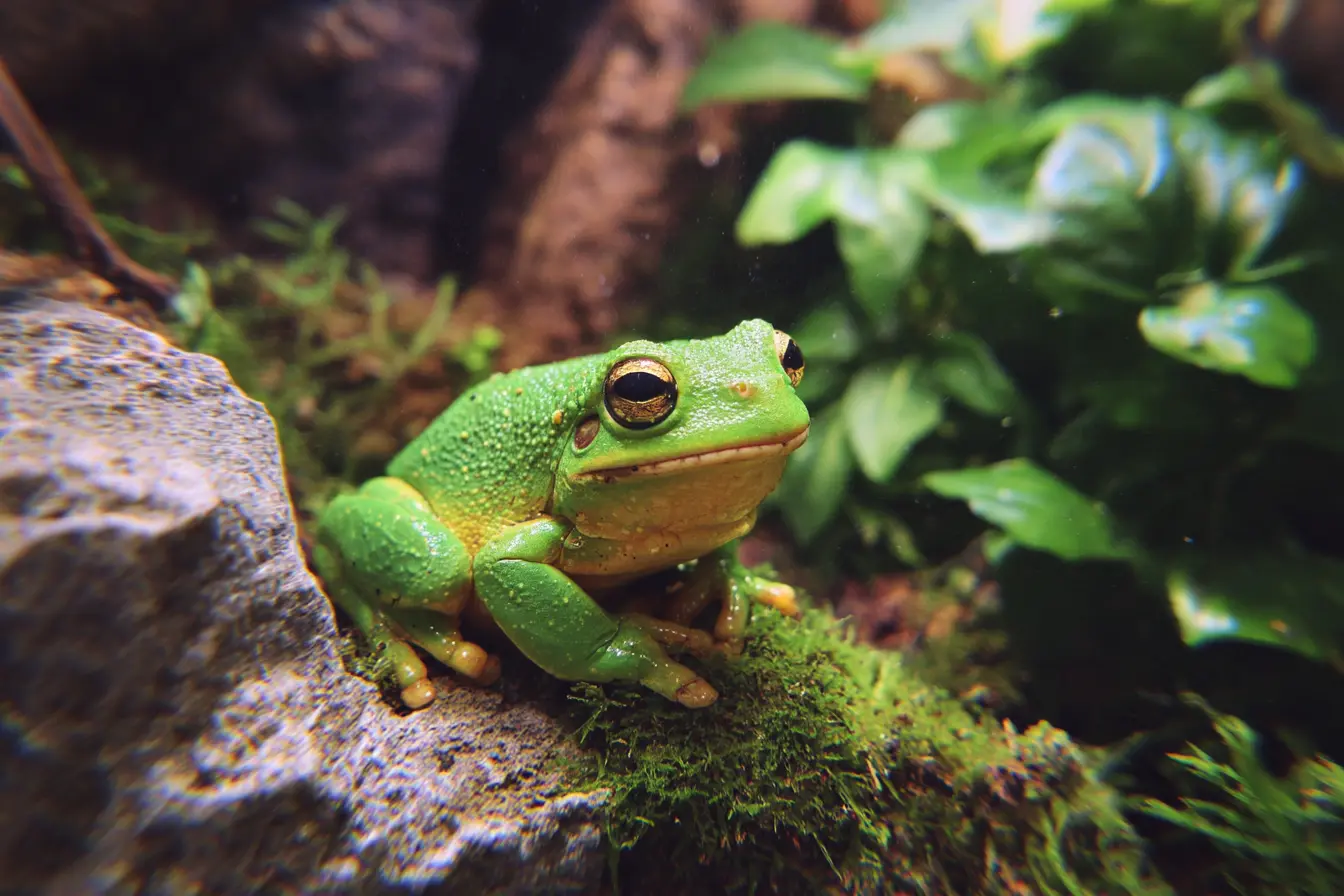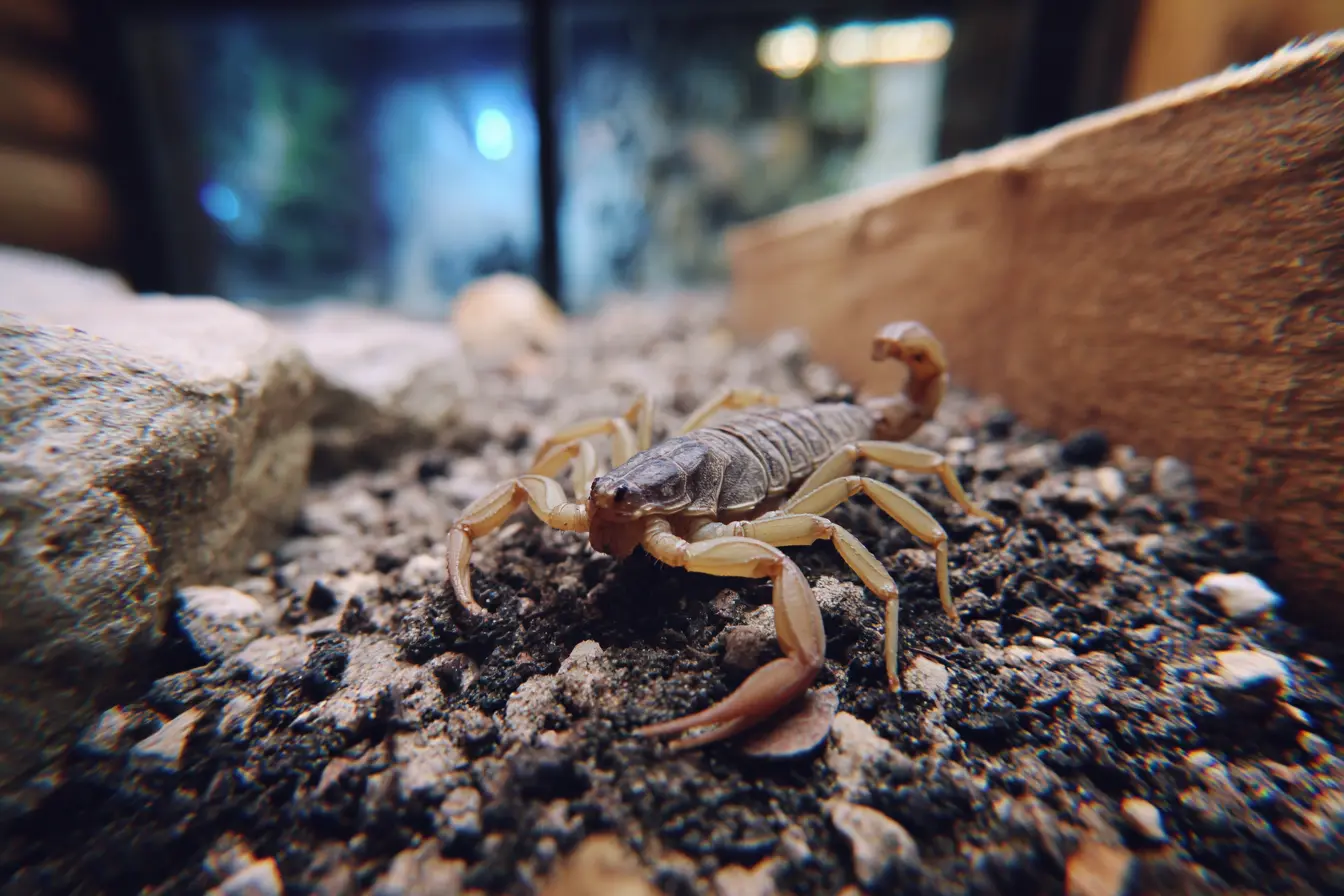
The Complete Guide to Caring for a Paddle-Tail Newt
The paddle-tail newt (Pachytriton labiatus) is a hardy and fascinating amphibian known for its strong swimming ability and bold behaviour. Originating from the cool, fast-flowing streams of southern China, this fully aquatic species has become a popular choice among newt enthusiasts, especially for those looking for a more interactive and visible pet.
This care guide covers everything you need to know to keep a paddle-tail newt healthy and thriving in captivity.
Introduction to the Paddle-Tail Newt
Paddle-tail newts get their name from their laterally flattened tail, which helps them glide gracefully through water. They are typically dark brown or black with orange or rust-coloured undersides. Some individuals display faint spotting or patterning.
They can grow up to 15–18 cm (6–7 inches) and are relatively long-lived, often reaching 10–15 years in captivity with proper care.
Is a Paddle-Tail Newt the Right Pet for You?
Before committing to this species, consider the following:
- They are fully aquatic and require a water-based setup
- They are active and visible, but not suitable for handling
- They prefer cooler temperatures and need a stable environment
- They can be territorial and are best housed alone or in well-planned group setups
- They are great for beginner to intermediate amphibian keepers
If you're looking for a newt with personality and don’t mind a water-focused habitat, the paddle-tail newt can be a rewarding choice.
Housing Your Paddle-Tail Newt
Tank Size and Setup
A single adult paddle-tail newt should be housed in an aquarium of at least 60 litres (15 gallons), though larger is always better, especially for groups.
Key features:
- Water depth: 20–30 cm is ideal, with some variation using rocks or ledges
- Substrate: Bare bottom or smooth river stones for easy cleaning
- Decorations: Caves, rocks, driftwood, and plastic or silk plants for hiding spots
- Filtration: A low-flow filter to keep water clean without creating strong currents
- Lid: A tight-fitting lid is essential — they are strong and persistent climbers
This species does not require a land area and rarely leaves the water when conditions are correct.
Water Quality and Parameters
Clean water is vital for the health of paddle-tail newts.
- Temperature: 16–22°C (60–72°F)
- pH: 6.5–7.5
- Ammonia/nitrite: 0 ppm
- Nitrate: Below 20 ppm
Use a high-quality water conditioner to remove chlorine and chloramine from tap water. Perform weekly water changes of around 25–30%.
Avoid tropical fish heaters — these newts are cold-water animals and may become stressed or ill at higher temperatures.
Lighting
Paddle-tail newts do not require UVB lighting, but a standard aquarium LED or fluorescent light can help mimic natural day/night cycles and support plant growth in the tank.
Provide a light cycle of 10–12 hours per day. Make sure to include shaded areas or floating plants so the newt can escape bright light if desired.
Feeding Your Paddle-Tail Newt
These newts are carnivorous and have hearty appetites. In fact, they are often more confident and bold during feeding times.
Recommended foods:
- Earthworms (chopped)
- Bloodworms (live or frozen)
- Blackworms
- Daphnia
- Brine shrimp
- Waxworms (occasionally)
- Small strips of raw freshwater fish or shrimp
Feed 2–3 times per week. Remove uneaten food after 10–15 minutes to keep water clean. Variety is key to ensuring proper nutrition.
Behaviour and Tank Mates
Paddle-tail newts are known for their assertive and sometimes territorial behaviour. While they can be kept in groups, fights may occur, particularly over space or food.
Best practices for housing multiples:
- Provide ample hiding spots
- Use visual barriers to break line-of-sight
- Watch closely for signs of aggression such as bites or tail damage
- Avoid housing with fish, as these newts may nip or be outcompeted for food
In most cases, a solitary setup is ideal unless you’re experienced and have a large enough tank.
Handling and Interaction
These newts should not be handled unless absolutely necessary. Their skin is sensitive and can absorb harmful substances like soap, lotion, or even tap water chemicals.
If handling is needed:
- Rinse hands with dechlorinated water
- Use powder-free gloves
- Handle gently and briefly, keeping them moist at all times
They are best enjoyed through observation. Their boldness during feeding and swimming makes them one of the more engaging amphibians to watch.
Health and Common Issues
Paddle-tail newts are relatively robust, but poor water quality or incorrect care can lead to problems.
Common health concerns:
- Fungal infections: White, fuzzy patches on the skin
- Bacterial infections: Redness, swelling, or ulcers
- Poor appetite: Often linked to water quality or stress
- Floating or bloating: Can be caused by impaction or internal issues
Always monitor water parameters and keep the enclosure clean. Quarantine any new additions and seek help from an exotics vet if symptoms appear.
Breeding Paddle-Tail Newts
Breeding is possible but rare in captivity without specific environmental triggers. To attempt breeding:
- Simulate seasonal changes with cooler water in winter, followed by gradual warming
- Provide plants or smooth surfaces for egg-laying
- Separate eggs or larvae from adults to prevent predation
- Feed hatchlings infusoria, baby brine shrimp, or micro worms
Breeding is usually undertaken by experienced keepers with established groups and detailed knowledge of seasonal cues.
Where to Get a Paddle-Tail Newt
Choose a reputable breeder or exotic pet shop that specialises in amphibians. Avoid wild-caught individuals, which may be stressed, parasitised, or poorly adjusted to captive conditions.
Look for:
- Clear eyes and smooth skin
- Strong swimming ability
- Good appetite
- Clean and well-maintained tanks
Ask about the animal’s origin, diet, and age before purchasing.
Final Thoughts
The paddle-tail newt is a bold, beautiful, and beginner-friendly amphibian that thrives in a well-maintained aquatic setup. Its hardy nature and active behaviour make it an ideal species for those who want a water-dwelling amphibian with personality.
With proper care and attention to water quality, a paddle-tail newt can be a long-lived and fascinating pet that brings a slice of nature into your home.
Contents
- Introduction to the Paddle-Tail Newt
- Is a Paddle-Tail Newt the Right Pet for You?
- Housing Your Paddle-Tail Newt
- Water Quality and Parameters
- Lighting
- Feeding Your Paddle-Tail Newt
- Behaviour and Tank Mates
- Handling and Interaction
- Health and Common Issues
- Breeding Paddle-Tail Newts
- Where to Get a Paddle-Tail Newt
- Final Thoughts
Tags
Vets near you
Speciality vets
- Aquatics vet specialists
- Birds vet specialists
- Camelids vet specialists
- Cats vet specialists
- Cattle vet specialists
- Deer vet specialists
- Dogs vet specialists
- Equines vet specialists
- Exotic vet specialists
- Goats vet specialists
- Pigs vet specialists
- Poultry vet specialists
- Sheep vet specialists
- Small Mammals vet specialists
- Wild vet specialists



